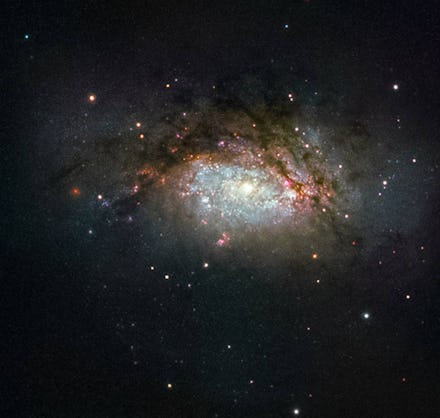This Stunning Image of Two Galaxies Colliding to Form a Mega-Galaxy Will Blow Your Mind

NASA's low Earth orbit Hubble telescope recently captured a stunning image of a distant galaxy collision, a phenomenon NASA said has become more common as the universe evolves. The newly released image reveals the stunning aesthetic produced by the modern celestial occurrence in what looks like a dreamy cosmic fantasy land.
The image shows the aftermath of a collision between two "good-sized galaxies" that will gradually morph into one "giant elliptical galaxy," called NGC 3597, according to NASA. The image shows a galactic merge that's at least 150 million light-years away and involves a hypnotic spectrum of colors including various shades of red, blue, purple and green.
Meg Urry, director of the Yale Center for Astronomy and Astrophysics, told the Huffington Post the phenomenon usually takes a few hundred million years to fully occur — putting the rarity of this image into perspective. "We know this because we can 'watch' galaxy collisions in computer simulations," she told the Huffington Post. "Because the time scales involved in the evolution of our universe are so huge, we do astronomy with snapshots like this image."
The Hubble, in orbit for 25 years, has released a variety of images revealing the process of of galactic collisions. In 2015, NASA released a mind-boggling image that showed the Milky Way and the neighboring Andromeda galaxy heading toward each other in a collision that's supposed to occur in roughly 4 billion years.